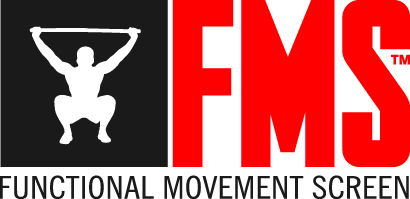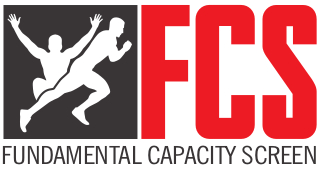Whiteboard Talks: Move Well. Move Often
Posted by FMS
In the video above, FMS co-founder Lee Burton describes how the Functional Movement Screen, the Selective Functional Movement Assessment and the Fundamental Capacity Screen work together in our System. As the video's title suggests, it's a road map for how and where both athletes and health/fitness professionals fit on the continuum.
Here's a basic outline to help you follow along:

It all starts with the FMS Level 1. Our FMS Level 1 course focuses on evaluating how an athlete moves for the purpose of determining their readiness for a particular activity, training program or sport.
We're all eager to help athletes become stronger and more durable, but first we need to know a bit more about the physical capabilities of the person we are training. This has less to do with their experience in the weight room or playing field and more to do with evaluating their basic physical literacy.
Are you a big believer in squats? Great, so are we, but shouldn't you confirm if your client has the requisite mobility and stability to safely perform the squat pattern? Want to teach your athlete how to swing a kettlebell? Love that, but first let's make sure they can hip hinge. Interested in programming overhead presses? Terrific, but how's your athlete's shoulder mobility?
As health and fitness professionals, our first responsibility is to protect an athlete from what can potentially harm them in training. If you have significant limitations or dysfunction in a movement, we need to protect you from those movements.
Overall, the results of the Functional Movement Screen should improve our decision-making for training and rehabilitation. As Lee demonstrates in the video, it should inform how we design our program and, just as important, an athlete's entry point on the rehab/training continuum.
The FMS Level 1 is available as an online course or live event (virtual or in-person).

The purpose of the FMS is to identify altered movement, but if that altered movement is caused by pain, we need to stop and investigate that. Enter the SFMA.
The SFMA is made up of 7 tests that are designed to tease out why an athlete is in pain. As Dr. Greg Rose describes it,
Imagine you're a gold-miner. You know there is gold in the mine, but there are 7 tunnels. The SFMA puts a traffic light in front of every tunnel. If the light is red, don't go down that tunnel, there's no pain. If it's green, we need to explore further because there is pain there. That's where the gold is so that's a pattern we must focus on.
Oftentimes, the underlying cause is different than the pain. These 7 basic moves will help you determine that.
The SFMA is mostly used by rehabilitation professionals, but many fitness professionals learn the SFMA so that they can better communicate with their team.
The SFMA Level 1 is available as an online course, but certification requires attendance at a live event (virtual or in-person).

If an athlete demonstrates pain-free dysfunctional movement patterns, our responsibiltiy is to help them correct those patterns. This is what we cover in our FMS Level 2 course.
A massive misconception about honoring principles of the FMS is that the focus is on correctives, not training. This is not the case.
The tools that we teach in FMS Level 2 should not dissuade you from training, but direct HOW you train.
By supplementing training with corrective strategies, we not only avoid potentially harmful patterns, but actively work towards building more durable, well-balanced athletes. To learn more about how this could be implemented in a group training environment, check out this article by FMS instructor Brett Jones.
Learn the basics of FMS 2 Online or get the full experience at a live event (virtual or in-person).

The Fundamental Capacity Screen forms the bridge between movement competency (FMS) and specific skill development (specialized training). It helps trainers, coaches, and fitness professionals identify pattern, capacity and skill-based problems in addition to informing individually tailored programming decisions.
It's made up of four tests that measure basic, elemental capacities related to movement control, postural control, explosive control and impact control. These results identify what a trainer should spend time developing to help an athlete succeed in a sport.
Read Gray Cook's explanation for more information on the Fundamental Capacity Screen.
Get started today with the FCS Online Course.
Similar to the FMS Level 2, the SFMA Level 2 focuses on treatment and correction. We introduce the 3 R's - Reset, Reinforce, Restore - and discuss how to incorporate them into patient care. We also discuss how to progress athletes through movements with the 4 X 4 Matrix.
When you leave this course, you will be equipped with a motor control reprogramming tool to immediately integrate into your clinical practice.
Learn SFMA Level 2 basics with the Online Course, or attain certification after attending a live event (virtual or in-person).
Posted by FMS
FMS Certification is on my do do list. i recently done the CSAC with lee Taft, that was a really good course - Always have to keep learning!
Great Work! Thanks for sharing such a informative article.